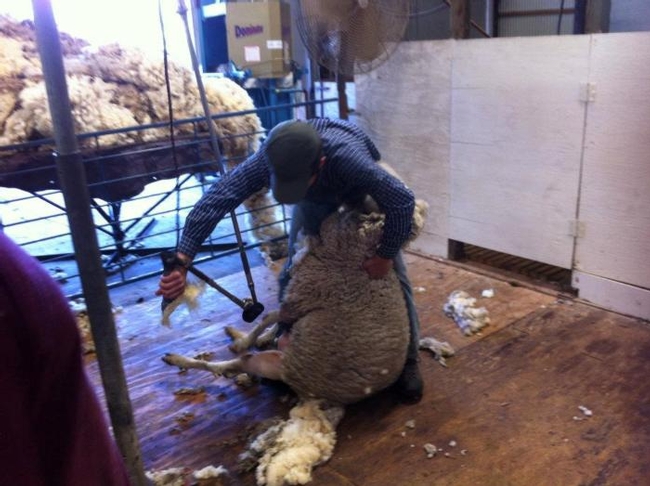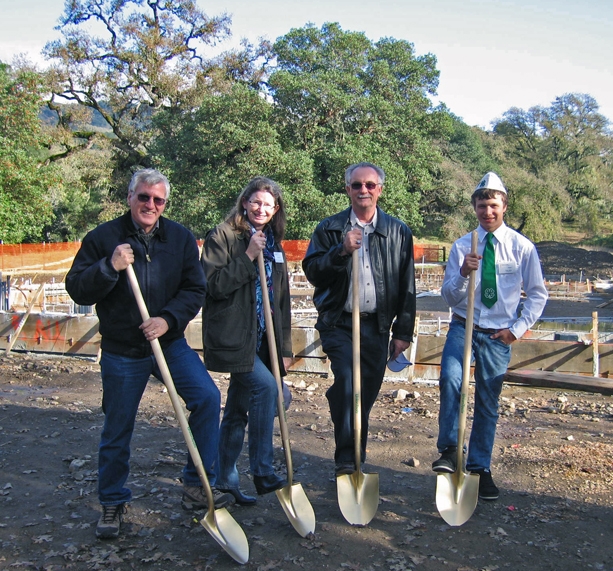
Posts Tagged: Hopland Research and Extension Center
Mendocino County no longer to contract with USDA Wildlife Services
Mendocino County supervisors decided to sever ties with the USDA's division of Wildlife Services, reported Peter Fimrite in the San Francisco Chronicle. The decision was made after environmental groups said the agency was indiscriminately killing predators, such as mountain lions and coyotes, because they are a threat to livestock.
The article featured a gallery of 10 artful photos taken at the UC Hopland Research and Extension Center, which maintains a research sheep flock of 500 breeding ewes. Record-keeping of sheep losses to predators began at Hopland in 1973. Coyotes are the most serious predator problem.
Hopland staff use a variety of non-lethal and preventative methods to protect sheep from predators, such as fencing, mob grazing and frequent pasture rotation and guard dogs, according to Kim Rodrigues, the director of the research and extension facility. Currently there are five guard dogs at the center. The guard dogs bond with sheep and protect them primarily by barking and other aggressive behaviors when strangers or predators are near the sheep flock.
Software developer quits job to shear sheep

"This year, I was on a ranch almost every weekend from January through June," Wilke said. "I got pretty burnt out."
With skills honed in three five-day sessions of training at the UC Agriculture and Natural Resources facility in Hopland, she has found she can earn between $50 and $100 per hour shearing sheep.
John Harper, UC ANR Cooperative Extension advisor in Mendocino County, has hosted the sheep shearing school for 20 years and has 40 years experience with sheep shearing.
"It is the longest running shearing school in California and I believe it's currently the only one," Harper said.
The training school started with instructors imported from New Zealand. When the cost of travel became prohibitive, Harper brought in Mike McWilliams from Oregon. Later Gary Vorderbruggen, who trained under McWilliams, became the chief instructor.
The five-day course will be offered again in 2016 with classroom instruction, demonstrations and hands-on experience. Beginning and experienced shearers have the opportunity for one-on-one training. Class dates have not yet been decided. Registration information will be posted on the Sheep Shearing School webpage.
View a PDF version of the Sheep Magazine article by clicking the link below.
Sheep Magazine article
UC invites community to view archaeological sites at research center
Dozens of northern California residents are expected at the UC Hopland Research and Extension Center on Saturday to take part in activities to celebrate California Archeology Month, reported Sarah Reith in the Ukiah Daily Journal.
"Archaeology for All" is offered jointly by Hopland and local Tribal Historic Preservation Offices. The research center is located on historic Hopland Pomo land and is the site of many rocks that were used in rituals thousands of years ago, the article says. Visitors on Saturday will see tribal markings on the site which are thought to be more than 5,000 years old.
"It's not artwork," said Donna Gillette, an archaeologist who specializes in rock art. "It's a good chance (the markings) are the result of ritualistic quarrying of material, probably for increase," or human fertility.
Before beginning to study rocks at Hopland, Gillette asked permission from the tribal group. The Historic Preservation Offices assigned Shawn Padi to work with her. Padi and another representative of the Tribal Historic Preservation Offices, Hillary Renick, will present talks at Saturday's event. Renick also plans to prepare and serve acorns, a traditional Native Californian stable, to participants.
The event will be at Rod Shippey Hall, 4070 University Road, in Hopland, from 10 a.m. to 2 p.m. on Saturday, Oct. 10. Tickets are $10 for adults. Children under 12 will be admitted free. Advance reservation required. For more information, call Hannah Bird at (707) 744-1424 ext. 105.
New pest found in California vineyards

Reporter Vicky Boyd based the article on a report by Lucia Varela, UC Cooperative Extension advisor, an integrated pest management expert for the north coast of California. So far, the Virginia creeper leafhopper has been reported primarily in backyard and organic vineyards.
Western leafhoppers are common in California vineyards. Many are controlled by natural enemies. Whether the same will hold true for the Virginia creeper leafhoppers is unknown.
Learn how to distinguish the two leafhoppers by watching the 4-minute UCCE video below.
Fifth annual sheepdog trials in Hopland showcase dogs' skills
Tiffany Revelle, Ukiah Daily Journal
Dog handlers competed recently in the 5th Annual Sheepdog Trials, held on the rolling hills of the UC Hopland Research and Extension Center.
Sheepdog trials are held all over the nation, allowing dogs to accumulate points that count toward a national competition where the top 150 compete for the top spot, bragging rights, and possibly, for money-making opportunities that could include training or breeding, according to Bob Keiffer, superintendent at Hopland.
Hopland REC builds conference room

The article quotes Bob Timm, the center's director, as saying, "We want to talk to people about whether our vision meets what the needs in the community are -- we want a building that fits into Mendocino County." Timm hopes the building will help the center expand its community outreach programs by being a site for workshops, conferences and classes.
The $1.6 million project is funded by UC capital construction funds and private donations to the project.
Timm is encouraging gifts from the community so that that the facility including the added “Green Works” elements can be completed within the coming months. Descriptions of the building plans and added features are found on the Hopland REC website at http://ucanr.org/sites/hopland.
U.S. EPA, Napa County announce millions for water quality, flood damage, northern California salmon
An EPA press release announced nearly $3.3 million in federal, state and local funding aimed at restoring water quality and riparian and aquatic habitats in the Napa River watershed. As part of two major restoration efforts covering 15 miles of the Napa River, more than 40 landowners have committed to converting nearly 135 acres of farmland to wildlife habitat.
The primary grant recipient is Napa County, in partnership with the Napa County Resource Conservation District, the California Land Stewardship Institute, UC Cooperative Extension and the Rutherford Dust Restoration Team of the Rutherford Dust Society landowner group.

